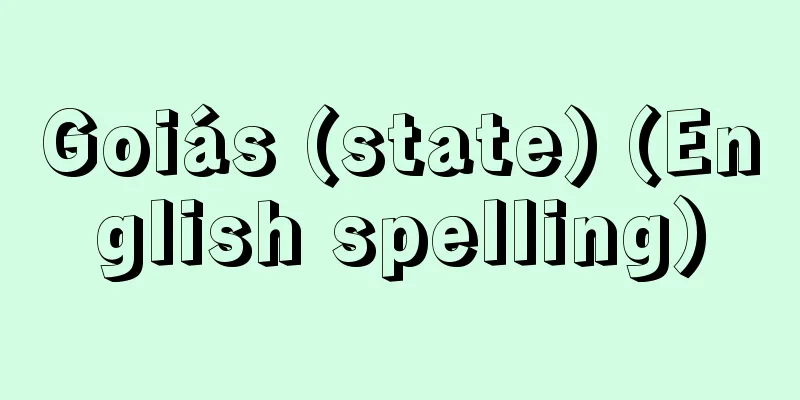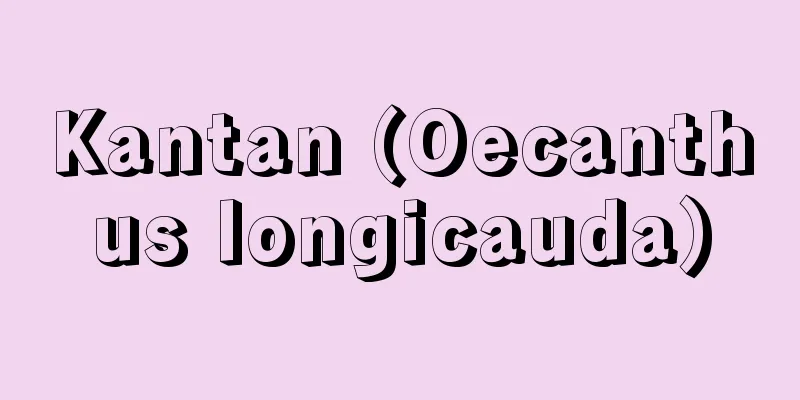Fujiwara-kyo

|
It was the capital of Japan for 15 years, spanning three generations from December 694 (the 8th year of the reign of Empress Jito), through Emperor Mommu, to March 710 (the 3rd year of the reign of Emperor Genmei), when the capital was moved to Heijo-kyo. It is known from the "Fujiwara Palace Well Song" in Volume 1 of the Manyoshu that the palace was located in an area surrounded by the three mountains of Yamato, Unebi, Miminashi, and Kagu. As a result of excavation work by the Institute of Japanese Ancient Culture, which lasted for 10 years from 1934 (Showa 9), it was revealed that the so-called Omiya Dodan in Takadono, Kamogimi Village (Takadono-cho, Kashihara City, Nara Prefecture) is the site of the Daigokuden (Great Hall) of Fujiwara Palace, and that in front of it exists the Chodoin, which houses 12 halls and the Choshuden (Choshu Hall). In 1966, the Nara Prefectural Board of Education conducted an emergency survey in conjunction with the construction of the Kashihara Bypass on National Highway 165, which passed through the area believed to be the Imperial Palace. This resulted in the unearthing of numerous wooden tablets bearing the name of "Hyo", confirming that the period when the characters "gun" and "Hyo" were changed was when the Taiho Code was enacted (702). Furthermore, the determination of the extent of the Fujiwara Palace made clear its close relationship with the surrounding ancient roads, making it possible to estimate the extent of Fujiwara-kyo and the grid-based land division. In other words, Fujiwara-kyo was divided into 12 streets, four each on the east and west sides of Suzaku-oji, and 12 blocks on the north and south sides, covering an area of about 2.1 kilometers east to west and about 3.1 kilometers north to south, with Nakatsumichi at the Tokyo end, Shimotsumichi at the Nishikyo end, Yamada-dori at the Nankyo end, and Yokooji at the Beijing end. Each block is 900 shaku (about 265 meters) long, and is divided into 13 square meters by alleys. The width of the roads dividing the temples, measured from center to center between the gutters, was approximately 25 meters for Suzaku-oji, 21 meters for Rokujo-oji facing the palace, 16 meters for Ni-yo-hachi-oji, 9 meters for Sanjo-oji, and 7 meters for alleys. Within the capital, in addition to Fujiwara Palace, which occupied the land of 16 temples in the north central area, there were the mansions of aristocrats, homes of commoners, temples such as Daikan-ji, Hon-yakushi-ji, and Ki-dera, as well as the East and West Markets, and the entire capital was managed by the Kyoshiki. The construction of Fujiwara-kyo has been thought to have been around that time due to an entry in the Nihon Shoki for October in the 5th year of the reign of Empress Jito (691), which states that "messengers were sent to pacify Shinyaku-kyo and hold a ceremony," but in recent years the prevailing view has been that construction began in 684 (the 13th year of Emperor Tenmu's reign). Considering the fact that an imperial decree was issued the previous year establishing a multi-capital system and the capital was located in Naniwa, and the similarities in structure between the Early Naniwa Palace and Fujiwara Palace revealed by excavations, it is thought that Fujiwara-kyo was built in close connection with the Early Naniwa Palace. The Fujiwara Palace and the center of the capital have been designated as national historic sites, and excavations by the Nara National Research Institute for Cultural Properties (formerly the Nara National Research Institute for Cultural Properties) have continued, producing many results. [Yoshiharu Nakao] "Fujiwara Palace - Half a Century of Research and Studies" (1984, Asuka Historical Museum, Nara National Institute of Cultural Properties) Remains of the Daigokuden Hall. Nationally designated special historic site Kashihara City, Nara Prefecture ©Kashihara City "> Fujiwara Palace Ruins Source: Shogakukan Encyclopedia Nipponica About Encyclopedia Nipponica Information | Legend |
|
694年(持統天皇8)12月から文武(もんむ)天皇を経て、元明(げんめい)天皇の710年(和銅3)3月の平城京遷都まで3代15年間の都城。その宮城である藤原宮が、畝火(うねび)・耳成(みみなし)・香具(かぐ)の大和(やまと)三山に囲まれた地にあったことは、『万葉集』巻1の「藤原宮の御井(みい)の歌」によって知られる。1934年(昭和9)から10年間にわたる日本古文化研究所による発掘調査の結果、旧鴨公(かもぎみ)村高殿(たかどの)(奈良県橿原(かしはら)市高殿町)のいわゆる大宮土壇が、藤原宮の大極殿(だいごくでん)跡であり、その前方に12堂と朝集殿を配する朝堂院が存することが明らかにされた。1966年(昭和41)には、内裏(だいり)推定地を通過する国道165号橿原バイパス建設計画に伴って奈良県教育委員会による緊急調査が行われた結果、「評」名を記した木簡が多数出土して、「郡」・「評」の用字の交替期が大宝令(たいほうりょう)施行(702)に伴うものであることが確認された。また藤原宮の範囲が確定したことによって周辺古道との密接な関係が明らかになり、藤原京の範囲や条坊制地割が推定できるようになった。すなわち、藤原京は中ツ道を東京極(ひがしきょうごく)、下ツ道を西京極、山田道を南京極、横大路を北京極とする東西約2.1キロメートル、南北約3.1キロメートルの範囲を、朱雀(すざく)大路を中心に東・西各4坊、南北12条に区画されている。1坊は900尺(約265メートル)で、小路によって4坪に分けられている。坊を区画する道路幅は、側溝心心距離で朱雀大路が約25メートル、宮に面する六条大路が21メートル、二・四・八条大路が16メートル、三条大路が9メートルで、小路は7メートルとなっている。京内は、中央北寄りに16坊の地を占める藤原宮のほか、貴族の邸宅、庶民の家屋、大官大寺、本薬師寺、紀寺(きでら)などの諸寺院や東・西市が設けられ、京職(きょうしき)が京全体を管理していた。 藤原京の造営は、『日本書紀』持統(じとう)天皇5年(691)10月条の「使者を遣(つかわ)して新益京(しんやくのみやこ)を鎮め祭らしむ」とある記事によってそのころと考えられてきたが、近年、684年(天武天皇13)に造営が開始されたとする考えが有力となっている。前年に複都制の詔(みことのり)が出されて難波(なにわ)に都が置かれていることや、発掘で明らかにされた前期難波宮と藤原宮の構造の類似からみると、藤原京が前期難波京と密接な関係のもとに造営されたことが考えられる。藤原宮・京の中心部は国の史跡に指定されており、奈良文化財研究所(旧、奈良国立文化財研究所)によって発掘調査が継続され多くの成果をあげている。 [中尾芳治] 『『藤原宮――半世紀にわたる調査と研究』(1984・奈良国立文化財研究所飛鳥資料館)』 大極殿跡。国指定特別史跡 奈良県橿原市©橿原市"> 藤原宮跡 出典 小学館 日本大百科全書(ニッポニカ)日本大百科全書(ニッポニカ)について 情報 | 凡例 |
<<: Fujiwara Ginjiro - Fujiwara Ginjiro
Recommend
Tetraspore
…Amokine spores are widely found in algae, fungi,...
Tsugazakura - Tsugazakura
An evergreen shrub of the Ericaceae family (APG c...
Dhammapada - Hokukyo
A scripture of early Buddhism. The Pali text is c...
Weber, EH (English spelling)
…Born in Wittenberg. He studied mathematics at th...
al-Ṭūsī, Naṣīr al-Dīn
[Born] 1201.2.18. Tooth Died June 26, 1274. Baghda...
Chemical cell
A battery that converts chemical energy into elect...
Celtic fringe
…When the Anglo-Saxons began to migrate to Great ...
Konsei Pass
This pass is located on the border between Nikko ...
Batrachospermum gallaei (English spelling) Batrachospermum gallaei
…[Mitsuo Chihara]. . . *Some of the terminology t...
Heron
[1] (noun) ① A general term for birds belonging to...
Eliza Orzeszkowa
1841‐1910 A representative Polish positivist novel...
Fescue - Fescue
→ Fescue Source : Heibonsha Encyclopedia About MyP...
The Hague
The capital of the province of South Holland in t...
Betsugu - Second Shrine
A title given to the main shrine, referring to sh...
Pilgrimage - pilgrimage (English spelling)
It refers to religious behavior in which one temp...









